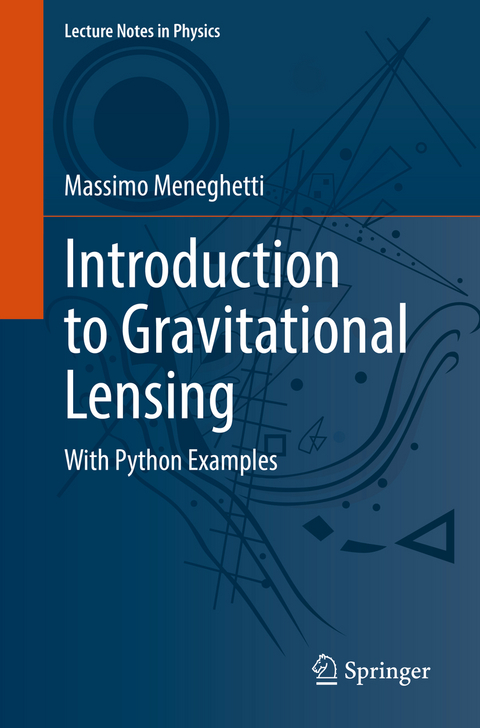
Introduction to Gravitational Lensing
Springer International Publishing (Verlag)
978-3-030-73581-4 (ISBN)
This book introduces the phenomenology of gravitational lensing in an accessible manner and provides a thorough discussion of the related astrophysical applications. It is intended for advanced undergraduates and graduate students who want to start working in this rapidly evolving field. This includes also senior researchers who are interested in ongoing or future surveys and missions such as DES, Euclid, WFIRST, LSST.
The reader is guided through many fascinating topics related to gravitational lensing like the structure of our galaxy, the searching for exoplanets, the investigation of dark matter in galaxies and galaxy clusters, and several aspects of cosmology, including dark energy and the cosmic microwave background.
The author, who has gained valuable experience as academic teacher, guides the readers towards the comprehension of the theory of gravitational lensing and related observational techniques by using simple codes written in python. This approach, beyond facilitating the understanding of gravitational lensing, is preparatory for learning the python programming language which is gaining large popularity both in academia and in the private sector.
lt;p>Massimo Meneghetti is a researcher at INAF, Observatory of Astrophysics and Space Science of Bologna, Italy. He obtained his Ph.D. in Astronomy at the University of Padova and worked at the Institute for Theoretical Astrophysics of the University of Heidelberg (Germany) and at the Jet Propulsion Laboratory in Pasadena (USA). His research focuses on cosmology and structure formation to understand the nature of dark matter and dark energy, the major components of the Universe, topics on which he has authored over 160 papers. In particular, he has taken major roles in several international projects that use gravitational lensing as a tool to investigate the matter distribution in cosmic structures like galaxies and galaxy clusters and to explore the distant universe. He taught gravitational lensing to master students in Astrophysics and Cosmology at the University of Bologna for more than ten years, during this period he developed the lecture notes contained in this book.
Light deflection.- The general lens.- Microlensing.- Strong lensing by galaxies and galaxy clusters.- Weak lensing by virialized structures.- Weak lensing by the large-scale-structure.- Lensing of the Cosmic Microwave Background.
| Erscheinungsdatum | 07.11.2021 |
|---|---|
| Reihe/Serie | Lecture Notes in Physics |
| Zusatzinfo | XIII, 412 p. 131 illus., 120 illus. in color. |
| Verlagsort | Cham |
| Sprache | englisch |
| Maße | 155 x 235 mm |
| Gewicht | 652 g |
| Themenwelt | Naturwissenschaften ► Physik / Astronomie ► Astronomie / Astrophysik |
| Naturwissenschaften ► Physik / Astronomie ► Relativitätstheorie | |
| Schlagworte | Dark matter and dark energy • Exoplanets observations • Galaxy Clusters • Gravitational lensing and cosmology • Gravitational lensing computations • Gravitational Lensing Theory |
| ISBN-10 | 3-030-73581-8 / 3030735818 |
| ISBN-13 | 978-3-030-73581-4 / 9783030735814 |
| Zustand | Neuware |
| Haben Sie eine Frage zum Produkt? |
aus dem Bereich


